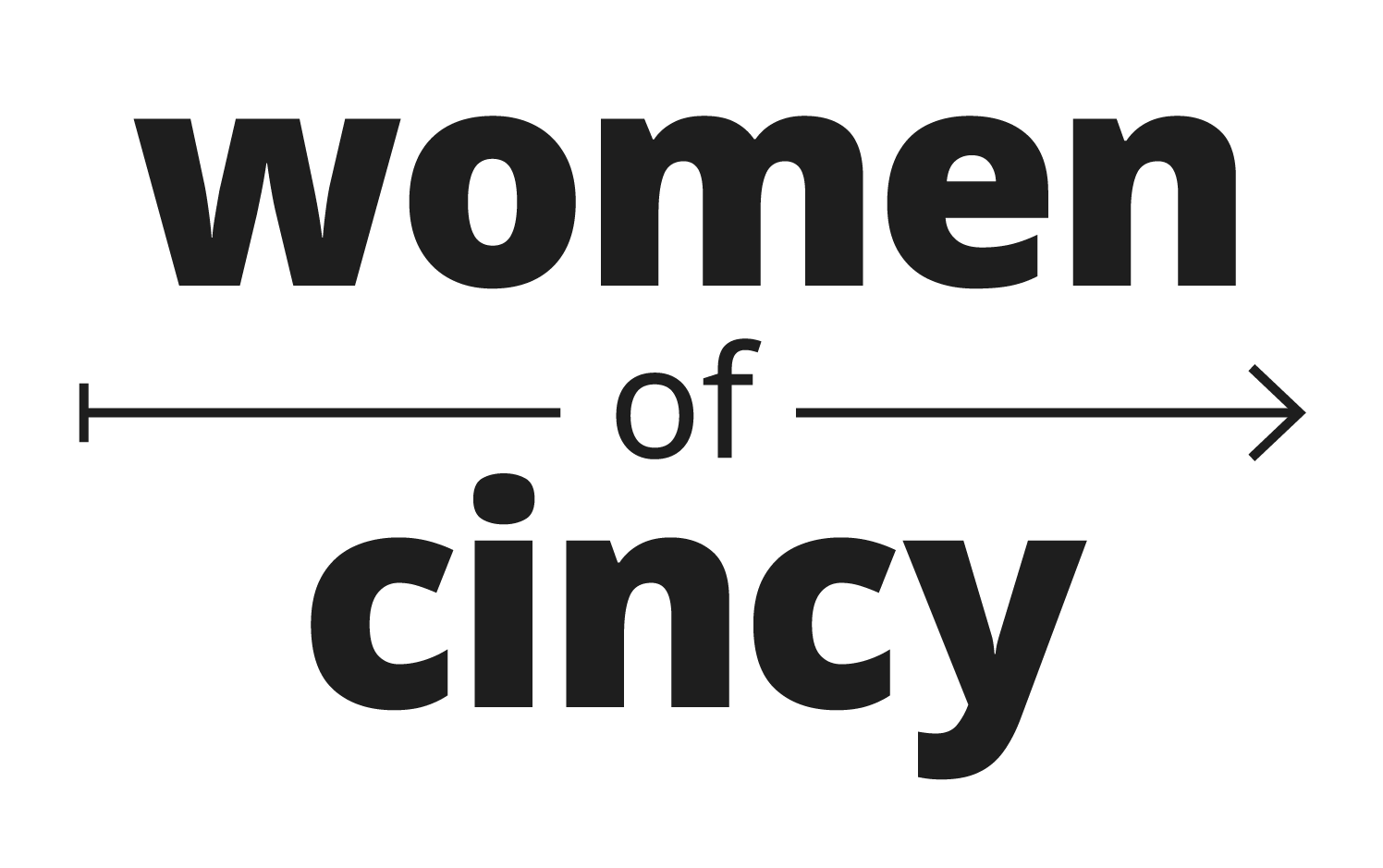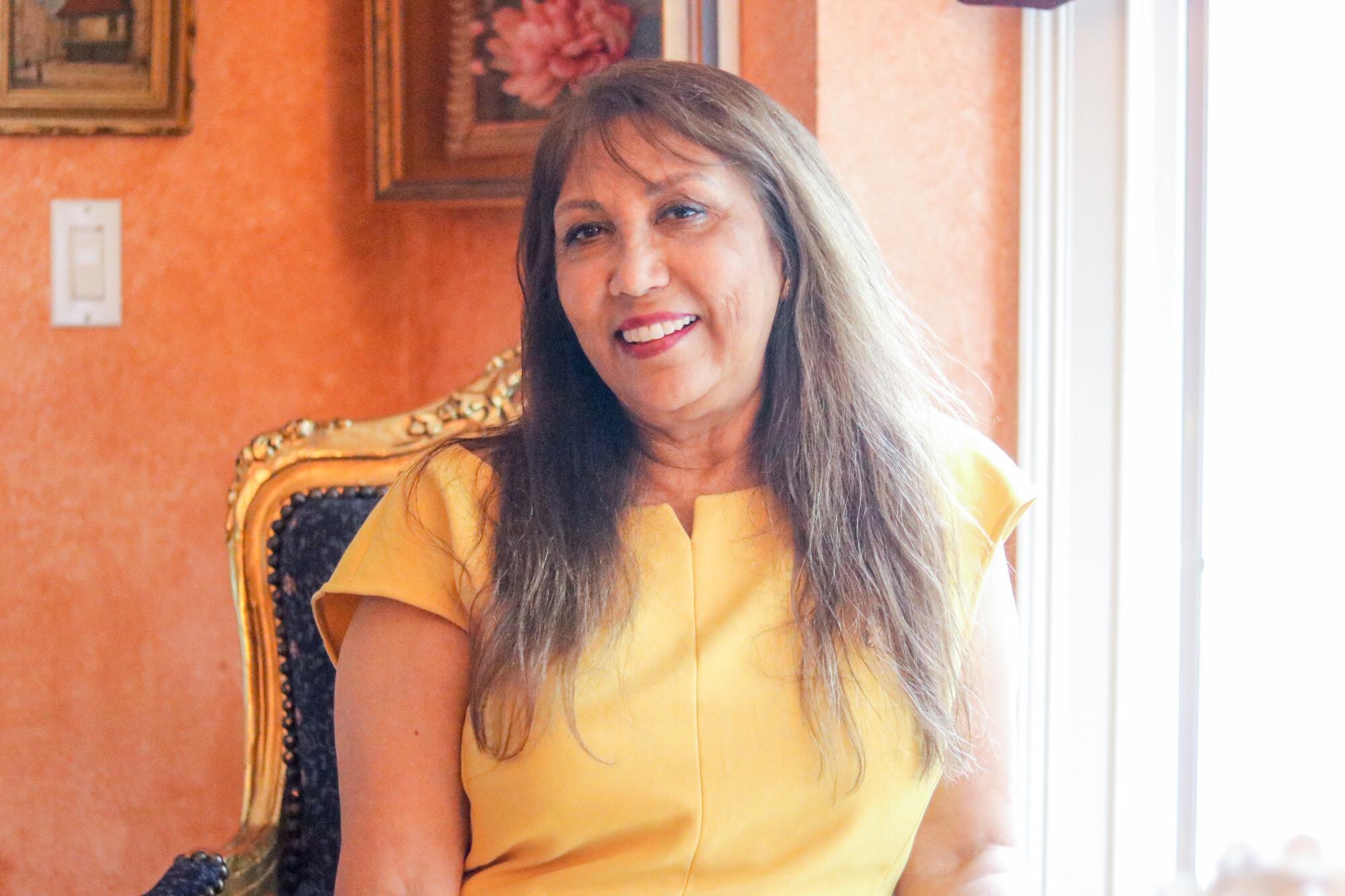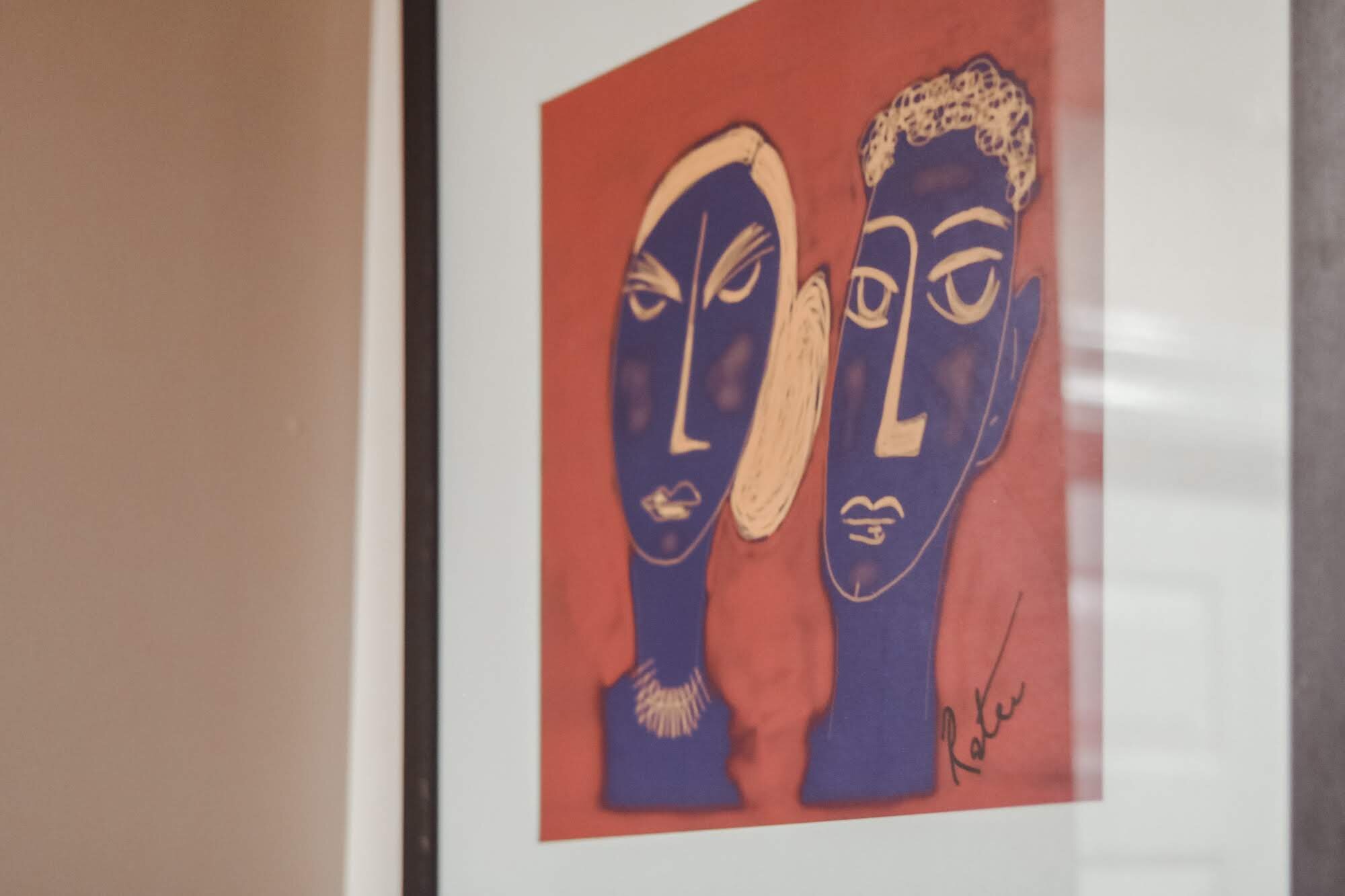Home Away from Home: Ratee Apana
The first time I realized a woman could be more than one thing was revolutionary for me. I had gotten my Time magazine for the week, and the inside front cover was a picture of Jane Fonda (I think). It was an American Express ad that characterized her as a world traveler along with a big caption with a description along the lines of “Actress | Visionary | Activist.” I had known Jane Fonda as an actress. I knew she’d done all of these other things too, but had never thought of them as part of her identity. And yet, here it was. It put my own life into perspective as I was struggling to find my own identity. I wanted to do so many things, yet society had told me I needed to be just one thing. I had too many passions to do just one thing.
As I got to know Ratee Apana, I thought back to that ad again. In her case, it was: Professor | Founder | Activist | Entrepreneur | Consultant | Artist – and so much more. We sat down for our interview in her meticulous Indian Hill home – a place every bit as luxurious as I imagine the Umaid Bhawan Palace might look. Gorgeous oversized watercolor family portraits – which Ratee painted herself – and ornate furnishings and Persian rugs adorn the home. Everything is big and beautiful.
Interview by Clara Matonhodze Strode. Photography by Emily Palm.
Ratee, you’re a woman of many talents. Can you abbreviate for me who Ratee Apana is in this moment?
Well, I'm a newly retired professor from the U.C. College of Business. I taught international business for 17 years. I am the founder of the Cincinnati Sister City Association (Mysore, India) and also the founder and executive director of the Indian Film Festival. I'm also a co-founder and vice president of the consulting firm, Artesia Global Consulting, and an entrepreneur. I run a commodities business called Tellicherry Pepper.
Tellicherry Pepper… I have never heard about that type of pepper. Can you tell me more?
Well, Tellicherry Pepper is very close to my heart. I come from a region in India where we grow tellicherry pepper. It's something my mother always dreamed of taking global, and so a few years ago, I set it up. Tellicherry pepper is a unique pepper; even though you will find bottles that say tellicherry, it's not available in stores in its authentic form. I needed to pursue that since I have all the time now, and can use my management skills to help it grow. I have the time to put my energy behind it, away from the classroom. I'm so excited.
What makes the tellicherry pepper worth it for you?
It's an indigenous Indian plant that's medicinal and very good for the brain. It promotes intelligence and is extremely good for the digestive tract.
What was your childhood like?
I had the most beautiful childhood. I grew up in the city of Bangalore, but we would go back home – when I say “home,” I mean the region my parents were from up in the hills, absolutely beautiful. My parents owned a coffee plantation, so we grew coffee and other spices like cardamom and pepper. There were many idyllic summers I spent out there by the brooks trying to catch the little minnows, watching the frogs in the well, and learning about nature and the plants. My father knew so much about plants and nature because he had grown up in the country. He taught me so much about the trees, their leaves, and plants.
So a lot of outdoor life while you were growing up.
Yes, a lot of outdoors. A lot of studying too. A lot of getting up to study at 4:30 a.m., then getting to school.
4:30 a.m. – that was a bit rough. When was the idea of immigrating to the U.S. introduced to you? Do you have an early memory of that?
You know, I never thought I would emigrate, honestly. I had the advantage of an excellent education. I graduated from the Indian Institute of Management Bangalore, which is the premier school in the country. It's like going to Harvard – in fact, better than Harvard because it's much more competitive to get in. The jobs were available to me, and I think in a lot of ways, I could have just stayed there.
You know, I am a little different from other immigrants in what [my husband and I] were looking for in coming to the U.S. to study. We were looking for global opportunities. We were looking for ways to maybe contribute to different societies, learn, to engage, to absorb, to do research, things like that.
I see a lot of beautiful and unique pieces of furniture here in your home. Can you tell me about them?
I grew up in India with a lot of different influences, and that's what India is: the French influence in southern India; British influence because they were there for such a long time; also Portuguese influence. And so, the furniture I have reflects that: The Western part of the cultural influences I grew up with are mixed with the Indian pieces. I have the French rococo table, some Russian tapestry, some British furniture influences, and that's how we grew up, with furniture that reflected the different eras of different colonial times.
We were looking for global opportunities. We were looking for ways to maybe contribute to different societies, learn, to engage, to absorb.
There is that distinct colonial heritage in India even today. I mean, think about English; that's how we communicate. We have over 26 official languages and 300 other languages. To this day, as I do the Indian Film Festival, I come across other Indian languages that I’ve never heard of. We are such a diverse country, and we have so many religions, so many ways of doing life, rituals, and customs. So, this living room celebrates that.
I have always marveled at the ability of Indian culture to maintain its own culture but also beautifully integrate others.
Yes, that's multiculturalism, right? Look at how the pieces enhance each other and live beautifully alongside each other. I feel that it's a mindset. It can be developed and become a great strength because, with multiculturalism and diversity, you only get better. You enhance.
Let's talk about your artistry: these beautiful, large portraits of your daughters and other beautiful paintings around us. What inspires you?
It's family. I think going back to my childhood, my father would say you can always do what you want to. As a child, I used to doodle a lot, and my father talked about an art class. Still, it wasn't an option because we were so much into academia, and we didn't have the opportunity to take art classes. We were trained to think in terms of the maths or sciences.
Later on, I decided that I was going to paint. This was a few years ago. I wanted to show my daughters that they can do whatever they want. I'm not an artist, but I can problem-solve. That's how you create the colors, the lighting, the shade. You're solving a problem to create that beautiful picture, and that's what I wanted them to learn: problem-solving and that they can do it too.
Tell us more about the Indian Film Festival. Can you talk about why you decided to take on the mammoth task of organizing a film festival and being its executive director?
Yes, it is a mammoth task, and had I known what a gigantic task it is, I might not have started it. I thought that film engages everyone – all ages and ethnicities. I thought it would be a great way to engage in multiculturalism.
A few years back, I was one of the co-authors of a white paper on how to make Cincinnati a more immigrant-friendly city as our mayor had requested. There were a lot of suggestions about how to do this. We thought, maybe a film festival, maybe artists or multicultural seniors and a lot of ideas, but ultimately, I thought, “Let me do this.”
We are a large community, about 18,000 people of Indian descent in the greater Cincinnati area. I thought film would be a great idea to show cultural similarities and speak to our shared humanity. And that phrase, “common humanity,” is what I used in all the letters about the festival that I sent out in the very first year. The goal was to bring in films that would speak to that common humanity, so we focus less on the color of skin, what the hair looks like, your eyes, etc. We want to bring in films that speak to the broader audience and our common humanity, so when you see them, you can relate to them. The films are very well curated to fit into the Cincinnati community.
Do you have themes that you tend to choose?
Yes, I’m looking at films that speak to specific issues that may be relevant to both Indian and Cincinnati contexts. For example, we had a film at the Freedom Center called “Jalki” that focused on human trafficking and child endangerment. It’s a big issue in our city. I designed a curriculum and took a U.C. Forward class to India to understand more about this issue. We started by going to Toledo, where they could see this was happening and talk to victims. Suddenly they realize, “Oh my God, this is real; this is happening in our community.” And then I took them to India, where several N.G.O.s and the Indian government are doing a tremendous amount of work to help rescued girls. For the students to see the contrast of how other societies are dealing with human trafficking is huge. They come back ready to implement working solutions. I am so proud to say three of my students – two lawyers and a doctor – are engaged in this issue.
What impact do you think the festival has had on Cincinnati?
Well, you have to tell me, as part of the audience, what do you think? How might it have impacted you?
I have to say that I was blown away by what you alluded to earlier – the common humanity. I mean, the fact that my 11-year-olds were dragging me to watch yet another Indian Film Festival movie says a lot. I think most people assume they will be hard to watch.
Yes, people don't realize that most of the movies are in English. Few have subtitles, which is really because as Indians, we communicate in English because we do not know each other's languages.
Ratee, through all these fabulous endeavors as an immigrant woman – you are working with the mayor of your adopted city; you are pioneering an Indian film festival; you are growing in your art – it just seems like life is peachy. What are some struggles that you have been through as an immigrant woman?
When we came here, my husband was a student, and I was a student's wife, which meant I could not work. You had to survive on the scholarship you got. (Today, students can work at the university, but we were not allowed to at the time.) We got about $350 after everything was paid for, so that was hard. No one from India could send us money because, at the time, you were only allowed to send $60 overseas because of the balance of payments for India. We had to survive on the meager income and borrow some money. Before you know it, you’re wrapped up in the system, and you have kids, and you’re just trying to make it work. I mean, when Raj landed here, it was winter and he had to buy all these things for the weather. He was sliding all over the pavement because he didn’t have the proper shoes.
I wanted to show my daughters that they can do whatever they want.
The second struggle was a surprise. I didn't expect the U.S. to be "backward" thinking because everything I had seen in the movies was of a friendly America. I expected people to be more curious, welcoming, and wanting to engage, but it was different. I suppose the cultures are different in this regard. In India, we are curious about the stranger. We welcome them in and everyone wants to meet them and get their story, but not so here.
It was really strange, because no one paid attention to us. I was so taken aback. Then I realized it's such a slow process to become acclimatized, especially in Cincinnati. You're an outsider. If you're not part of the “in group,” you never understand how they are thinking or feeling, and it's only now that it makes sense to me. I was lucky because I was in a classroom. It gave me some insights, whereas other people are not so lucky. I'm still amazed because when I went into education, I thought it would be much more forward-thinking, but diversity is a big issue there.
What do you think should be done? In Cincinnati, we love our D.E.I. initiatives, but it seems we’re still far off the mark. What is missing?
It goes back to what I said earlier: mindset. We need to change mindsets. We do this in our consulting practice as problem-solvers. It's really important to change the mindset and understand where we are coming from and why that matters because it shapes our biases. We have to take a step back to understand our own biases regardless of where we’re coming from. We have to take a step back and explore how to overcome this. Diversity is a huge benefit that we are leaving on the table, because no one benefits from entrenched stereotypes. We listen to others more than some. Why is that? Have you ever asked yourself that? I like that Cincinnati is doing something, but we have to do more.
I like your optimism. In times when you are not so optimistic, what keeps you going? Do you have something you lean on? What has kept you grounded?
I come from a family of strong women and strong men, so I think in a lot of ways, I always think back on my heritage and what I have. I remember my parents telling me to get my education because that's something no one can ever take away. If things go wrong, you can go someplace else and start over again. You know, you can lose your wealth; you can lose everything, but with an education, you can go somewhere and restart.
There's so much about my own family that, after coming here, I have begun to understand, and it's given me a lot of strength. For example, there's something they do at U.C. called GEN-1. First-generation professors are encouraged to put a note on their door so students can relate to them if they are also first-generation college attendees. It's a great program. I remember my colleague coming to remind me to put up this note, and I had not done it. Then they came again to say that I really needed to do it by this deadline. I had to very calmly say, “I'm a fifth-generation graduate on the men's side and third generation on the women's side.” That shows you the assumptions we make. So, I think about the trials and tribulations my ancestors had to get through to get an education.
My mother is another huge source of strength. I wear this bangle all the time to remind me of her. It's a traditional bangle, and only women from the area she grew up wear it. It means "togetherness"; that's something I wear all the time. I reflect on it because it makes me think of her. When she was sick, I gave it to her, and later on, she gave it back to me, so it has taken on this power that reminds me of her.
It also reminds me of regret. Moving here, you miss out on so much that could have been yours, and you never really think about it when you are moving. I think that's the hardest part.
As an immigrant, it's the biggest thing for me, too – the life I think I have missed. But think about all the positivity you have brought to Cincinnati and what our city would be missing if not for your presence here.
I know, and actually, I do feel that this is my home. It's home to my three beautiful daughters. One works in Hollywood, another at Luxottica, and the other at Diane von Furstenberg. I love this city.
“Home Away from Home” is Clara Matonhodze Strode’s monthly column celebrating immigrant women who now call Cincinnati home. Nominate folks for Clara to interview here.




